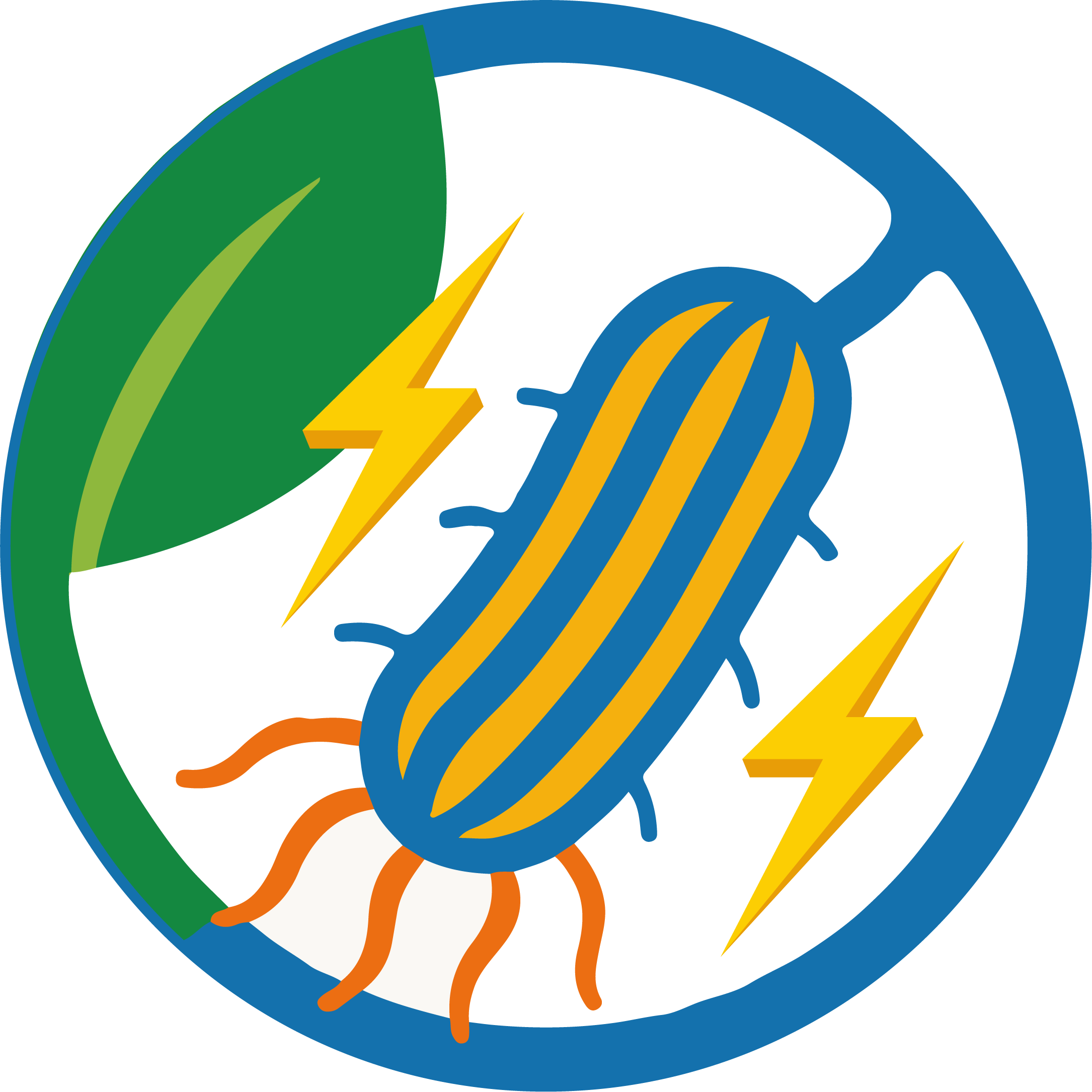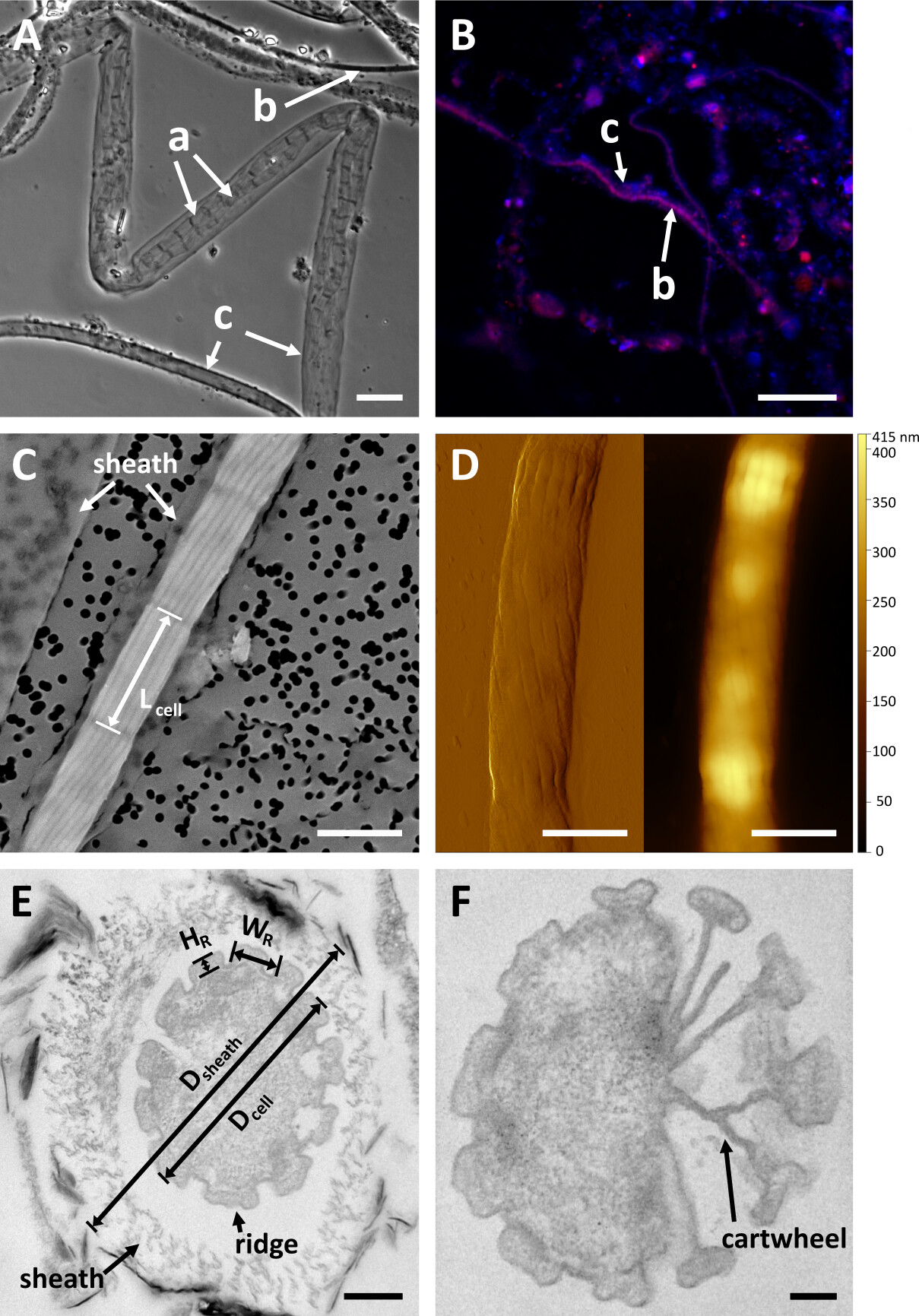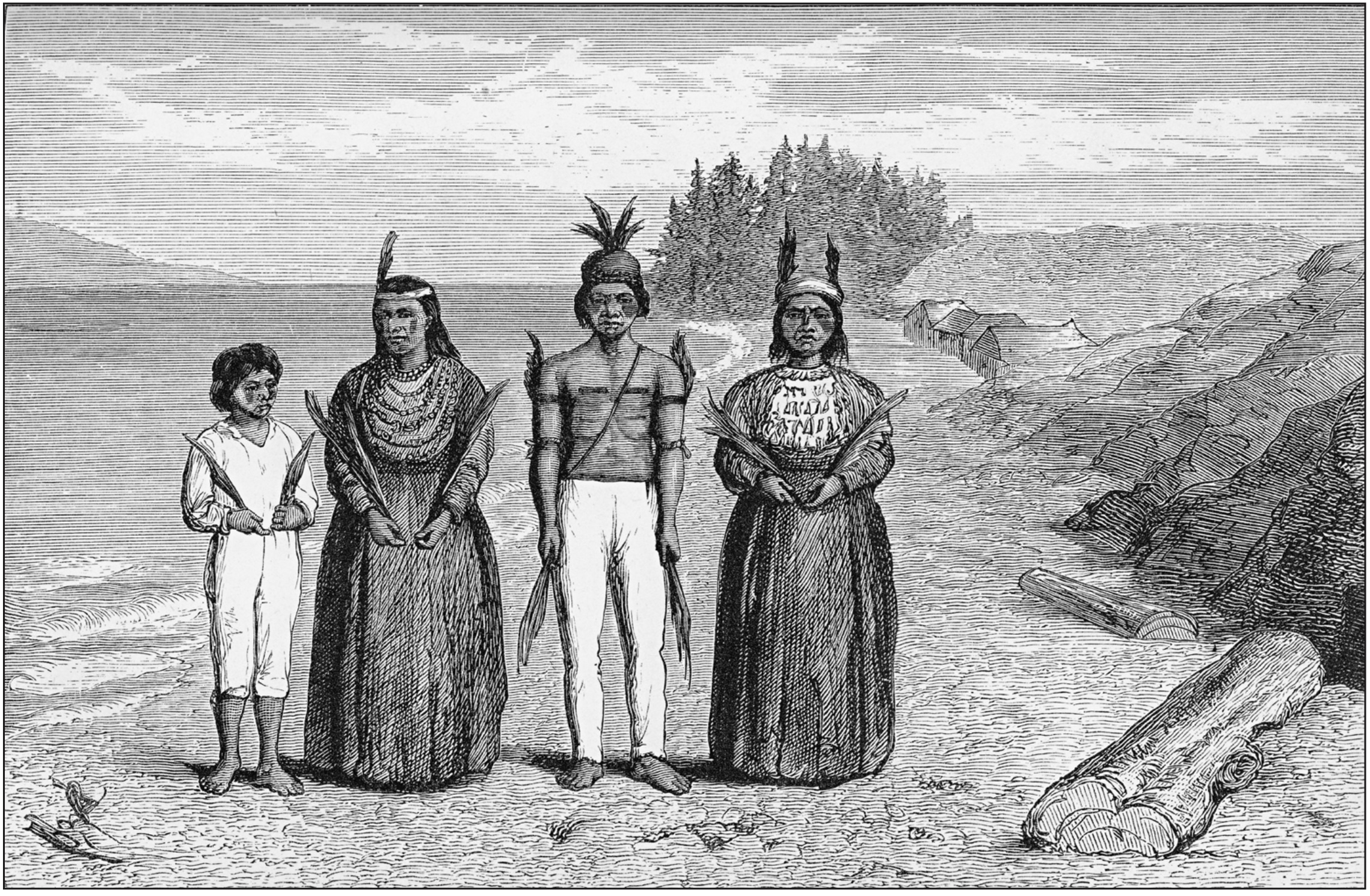
Discovery of Ca. Electrothrix yaqonensis
A newly identified species of electricity-conducting cable bacteria

A newly identified species of electricity-conducting cable bacteria
Our lab is proud to announce the discovery of a novel cable bacterium, Candidatus Electrothrix yaqonensis. This organism was isolated from intertidal sediment in Yaquina Bay, Oregon, and represents an early-branching member of the Ca. Electrothrix genus. The species features highly conductive nickel-based ridges—up to three times wider than those of previously known species—and a unique combination of genes from both known cable bacteria clades.
This bacterium performs long-distance electron transport and plays a key role in sediment redox cycling, linking deep sulfide oxidation to surface oxygen or nitrate reduction. Its novel protein composition may inspire bioelectronic innovations in medicine, environmental sensing, and pollutant remediation. The full study is published as: Hiralal, A., Li, C., Reimers, C. E., et al. (2024). A novel cable bacteria species with a distinct morphology and genomic potential. Applied and Environmental Microbiology, e02502-24. https://doi.org/10.1128/aem.02502-24

The species name yaqonensis honors the Yaqona (Yaqo’n) people, whose ancestral homeland lies within the Yaquina Bay watershed of Oregon’s central coast. The Yaqo’n lived in this region since time immemorial, sustained by the rich estuarine environment of oysters, salmon, and native plants. They were a sovereign people with distinct cultural traditions, including a class-based system in which head-shaping was practiced as a rite of distinction.

Following European contact, the Yaqo’n suffered devastating population loss due to disease and violent colonial expansion. In the 1800s, they were subjected to forced relocation onto the Coast Reservation and later into what became the Confederated Tribes of Siletz Indians. Despite systemic dispossession, displacement, and attempted erasure through assimilation and termination policies, their descendants continue to persevere.
We collaborated with members of the Confederated Tribes of Siletz Indians to name this species in recognition of the enduring legacy of the Yaqo’n people. By honoring their name, we acknowledge their deep connection to this land and the importance of Indigenous stewardship in ecological knowledge and sustainability.
To explore more about the history and legacy of the Yaqo’n people and the communities working to preserve their story and environment, visit the Confederated Tribes of Siletz Indians, the Yakona Nature Preserve & Learning Center, and Discover Newport's cultural heritage initiative.